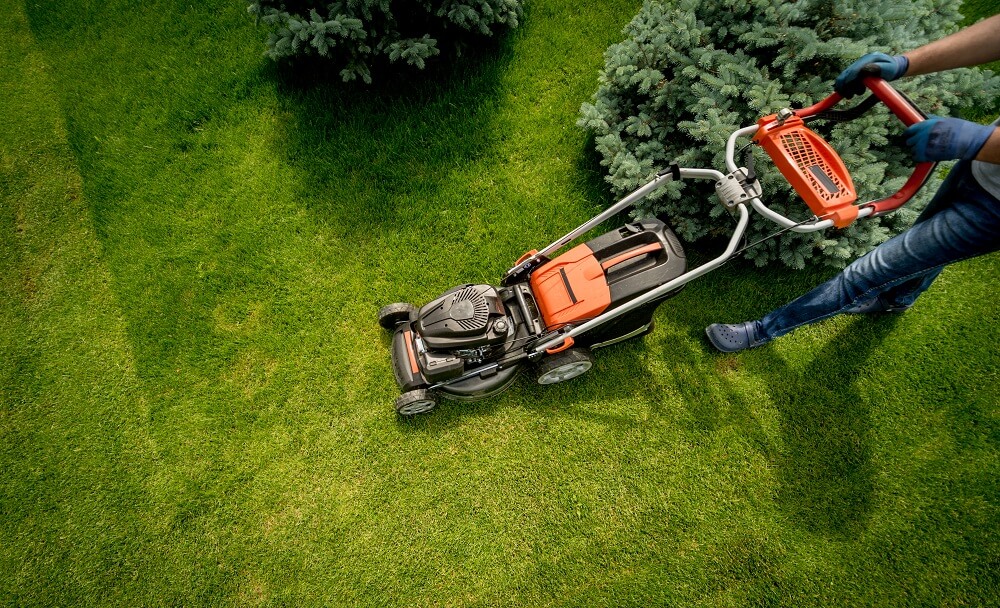Mastering Summer Lawn Care for a Healthy, Lush Lawn
Summer is the season when your lawn is in the spotlight. The bright sun, warmer temperatures, and increased outdoor activities mean your grass is constantly under pressure. That’s why Summer Lawn Care is not just a seasonal task but a critical strategy for ensuring your lawn thrives during the most challenging months. A beautiful green lawn in summer doesn’t happen by accident. It requires commitment, technique, and the right approach to watering, mowing, fertilizing, and more.
Understanding the Unique Challenges of Summer Lawn Care
The heat and dryness of summer can wreak havoc on even the most well-maintained lawns. The combination of high temperatures, inconsistent rainfall, and increased foot traffic creates stress that your lawn must be equipped to handle. Effective summer lawn care involves understanding these stressors and implementing a plan to mitigate them. From soil health to mowing height, every detail plays a role in ensuring your grass doesn’t turn brown and brittle.
Watering Techniques for Optimal Summer Lawn Health
Proper watering is a cornerstone of summer lawn care. During summer, many homeowners either overwater or underwater their lawns, both of which can lead to long-term damage. The key is to water deeply and infrequently, allowing the soil to absorb the moisture and encourage deep root growth. Early morning is the best time to water to reduce evaporation and fungal growth. Getting your watering routine right will protect your lawn from drought stress and promote resilience during dry spells.
Mowing Strategies That Support Summer Lawn Strength
Mowing might seem simple, but it is one of the most impactful aspects of summer lawn care. During the hotter months, raising the mowing height is essential. Longer grass blades provide shade to the soil, help retain moisture, and reduce the likelihood of weeds taking root. Always mow with sharp blades to avoid tearing the grass, which can lead to disease. A strategic mowing schedule, paired with proper technique, can transform your lawn from struggling to thriving.
Fertilizing Your Lawn the Right Way in Summer
When it comes to fertilization, summer lawn care requires a light touch. Over-fertilizing during hot weather can burn the grass and cause more harm than good. If your lawn needs nutrients, opt for a slow-release fertilizer applied sparingly. It’s also essential to understand your soil’s condition through a soil test, so you apply only what your lawn truly needs. This prevents waste and supports sustainable growth.
Managing Lawn Weeds During the Summer Season
Weeds can be aggressive during summer, outcompeting your grass for water and nutrients. Effective summer lawn care includes consistent weed management. The best approach is to keep your grass healthy and dense, as this naturally crowds out weeds. Spot-treat persistent weeds with appropriate products and avoid disturbing the soil excessively, which can bring buried weed seeds to the surface.
Dealing With Lawn Pests That Thrive in Summer Heat
Insects like grubs, chinch bugs, and sod webworms are more active during summer, and without proper summer lawn care, they can devastate a healthy lawn. Monitor your lawn for signs of pest damage such as brown patches or thinning areas. Integrated pest management that combines biological controls with careful pesticide use is the most effective and environmentally friendly solution.
Soil Health: The Foundation of Effective Summer Lawn Care
No summer lawn care routine is complete without attention to soil health. Compacted soil can prevent water, nutrients, and air from reaching the roots. Aerating the soil allows better absorption and encourages deep root systems, which are crucial during hot, dry periods. Additionally, maintaining the correct soil pH and ensuring adequate organic matter supports overall lawn vitality.
Mulching Clippings to Boost Lawn Resilience
Grass clippings left on the lawn can be a hidden secret weapon in summer lawn care. Known as grasscycling, this practice returns valuable nutrients to the soil and helps retain moisture. Rather than bagging your clippings, let them decompose naturally unless your lawn is diseased or has a weed problem. This sustainable practice reinforces soil health and supports a thriving lawn.
Recognizing Signs of Heat Stress in Your Lawn
Heat stress is a common issue in summer, and recognizing it early is key to successful summer lawn care. Grass that turns bluish-gray or doesn’t bounce back after foot traffic is likely stressed. In response, avoid mowing or fertilizing until the lawn recovers and focus on deep watering to restore its health. Monitoring your lawn’s condition daily allows for quick action when needed.
Preventing Foot Traffic Damage on Summer Lawns
Summer means more backyard gatherings and outdoor fun, but heavy foot traffic can damage your lawn. Strategic summer lawn care includes rotating activity zones, adding pathways, and encouraging guests to use designated areas. Allowing your lawn time to recover between events prevents compacted soil and thinning turf.
Using Drought-Tolerant Grass Varieties for Summer Success
If you’re establishing a new lawn or overseeding, choose drought-resistant grasses for better summer lawn care outcomes. Varieties such as Bermuda, Zoysia, and Tall Fescue handle heat and dry conditions better than cool-season grasses. Making the right choice during planting season can lead to fewer issues during the summer months.
The Role of Shade in Summer Lawn Maintenance
Shade can be both a blessing and a challenge in summer lawn care. While shade protects grass from the harsh sun, it can also promote moisture retention that fosters disease. Managing shade includes thinning trees to allow filtered light, planting shade-tolerant grass species, and reducing competition from tree roots for water and nutrients.
Avoiding Lawn Scalping During the Summer Months
Scalping is the practice of cutting grass too short, which exposes the soil to sun and leads to moisture loss. One of the biggest mistakes in summer lawn care is mowing too low. By maintaining a higher mowing height, you reduce heat stress, improve photosynthesis, and give your lawn a better chance to thrive.
Proper Lawn Equipment Maintenance for Better Results
Sharp mower blades, well-maintained sprinklers, and functional garden tools are essential for effective summer lawn care. Dull blades can tear grass rather than cut it cleanly, leading to disease. Sprinkler heads that don’t distribute water evenly can cause dry spots. Keeping your equipment in top shape ensures your efforts produce the best possible results.
Composting as a Natural Nutrient Boost for Summer Lawns
Composting is a powerful addition to summer lawn care. Applying compost in thin layers provides natural nutrients and improves soil structure. Unlike chemical fertilizers, compost enhances microbial activity and long-term soil health. Incorporating this organic material supports lush, resilient lawns without the risk of over-fertilization.
Importance of Regular Lawn Monitoring in Summer
A proactive approach to summer lawn care includes regular inspection of your lawn. Look for color changes, patchiness, and signs of pests or disease. By catching problems early, you can apply targeted solutions that minimize damage and ensure a season-long green appearance.
Balancing Fertilizer, Water, and Mowing for Optimal Health
The synergy between watering, mowing, and fertilizing cannot be overstated. Effective summer lawn care means balancing these three components to support healthy turf. Overdoing any one aspect while neglecting others can cause imbalances that lead to poor results. Coordinated timing and practices ensure that each component supports the others.
Understanding Grass Growth Cycles to Time Summer Care
Grass has growth cycles that influence when and how to perform specific summer lawn care tasks. Warm-season grasses are actively growing during summer and respond well to certain treatments, while cool-season grasses may enter dormancy. Knowing your lawn’s growth patterns allows for better timing of aeration, fertilizing, and watering schedules.
Reseeding Thin or Damaged Spots for Summer Repair
Even with the best summer lawn care, some spots may become thin or bare due to heat, pests, or wear. Reseeding during early summer can help fill these areas before fall. Using a high-quality seed mix appropriate for your climate and watering regularly helps new grass establish quickly.
Keeping Lawn Disease at Bay Through Preventative Measures
Summer warmth creates the perfect conditions for lawn diseases like brown patch and dollar spot. Preventative summer lawn care involves proper watering, avoiding over-fertilization, and maintaining airflow through aeration. Identifying symptoms early allows for timely treatment and reduces the spread of infection.
Conclusion: Build a Smart Summer Lawn Care Routine
A thriving lawn in summer doesn’t come from shortcuts or guesswork. It requires a comprehensive approach that includes proper mowing, watering, feeding, pest control, and soil management. Smart summer lawn care is about observing your lawn’s needs and responding with consistent, science-backed practices. By investing time and effort into your lawn throughout the summer months, you’ll enjoy lush, green turf that enhances your outdoor space and adds value to your home. Let Best Lawn Guy guide your seasonal care with expert tips and trusted service designed for every type of lawn.
FAQs
1. How often should I water my lawn during summer? For optimal summer lawn care, water your lawn deeply two to three times per week, depending on your soil type and weather conditions.
2. Is it okay to fertilize during a heatwave? No, avoid fertilizing during extreme heat. It can stress your grass further and may lead to burning. Always follow best summer lawn care timing practices.
3. What mowing height is ideal in summer? Raise your mower blade to leave grass taller, around 3 to 4 inches. This promotes moisture retention and reduces weed invasion, both key to proper summer lawn care.
4. How can I prevent brown patches in my summer lawn? Ensure proper watering, avoid over-fertilizing, and check for signs of disease or pests. Prevention and early detection are essential parts of summer lawn care.
5. Should I aerate my lawn in summer? Light aeration can benefit summer lawns, especially if soil is compacted. However, heavy aeration is better reserved for cooler seasons unless your lawn is warm-season grass and actively growing as part of your summer lawn care strategy.
Contact Us
- Phone: 651-994-8855
- Location: P O Box 534 Rosemount, MN 55068
- Website: bestlawnguymn.com
- Instagram: https://www.instagram.com/bestlawnguymn/
- Facebook: https://www.facebook.com/bestlawnguymn/


